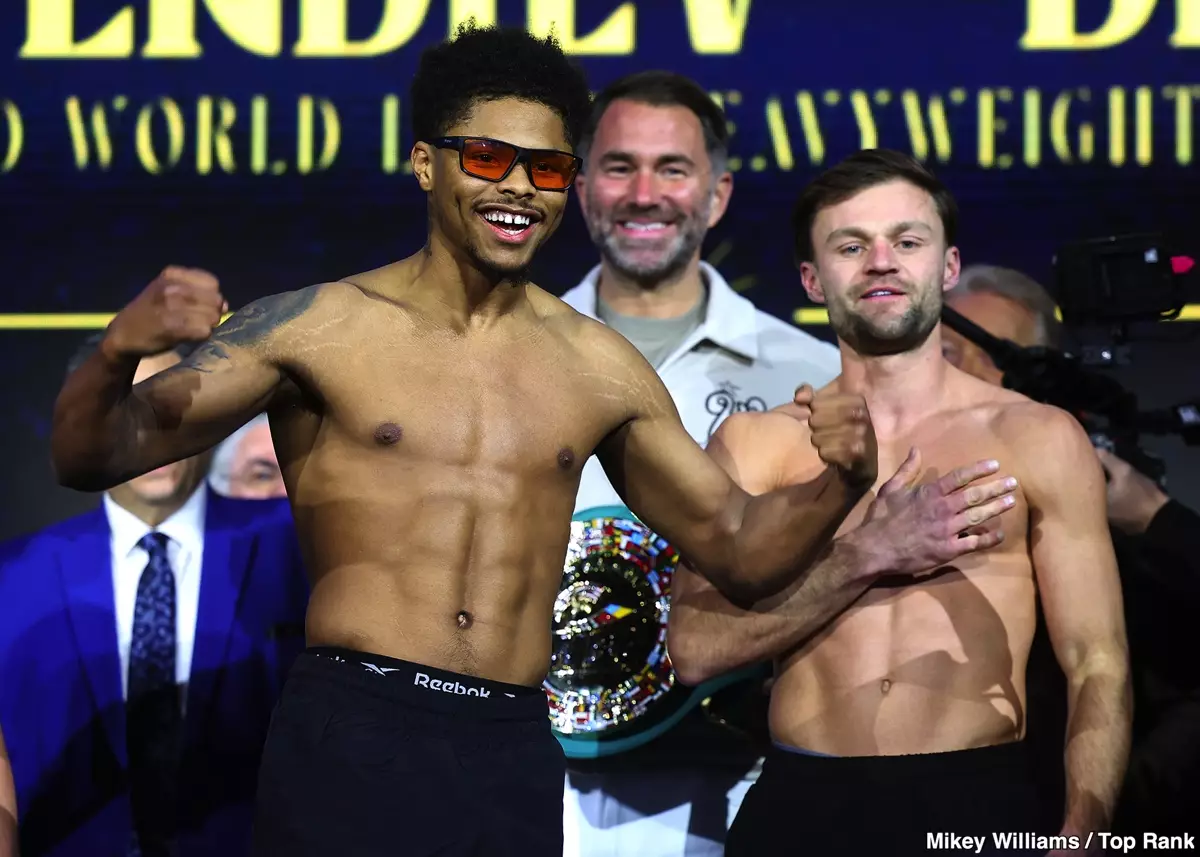In the world of boxing, predictions can often be fraught with bias and partiality, particularly when friendships and alliances influence judgments. Terence Crawford’s unwavering confidence in Shakur Stevenson as he faces Josh Padley is certainly noteworthy. Speaking to iFL TV ahead of tonight’s bout, Crawford expressed his belief that Stevenson would not only win against Padley but would subsequently challenge WBA champion Gervonta Davis in a highly anticipated unification match. However, the dynamics behind Stevenson’s upcoming fight are complex, involving not just Crawford’s friendship with Stevenson but also the various stakeholders in the boxing promotion realm.
Stevenson’s fight against Padley, a late substitute opponent, raises questions about competitiveness and preparation. With Padley undefeated at 15-0 with four knockouts, the bout presents a crucial test for Stevenson, who is considered one of the top prospects in the lightweight division. Nevertheless, Crawford opines that Stevenson’s historical pattern of fights suggests a calculated strategy rather than an all-out offensive approach. His inability to showcase knockout power at 135 pounds may necessitate a more evasive style, a factor that could influence judges’ opinions, particularly if the match fails to entertain the crowd. Critics might view this as detrimental, questioning Stevenson’s viability in high-stakes matchups against knockout artists like Davis.
The Battle for Boxing’s Future
Eddie Hearn’s involvement in facilitating a potential fight between Stevenson and Davis presents additional logistical challenges. Crawford recognizes that such a mega-event would require cooperation not only from Hearn but also from prospects such as Turki Alalshikh, indicating a tier of influencers that extends beyond the fighters themselves. This multifaceted negotiation process adds layers of suspense to the sport, as the hopes for an electrifying unification bout depend heavily on political maneuvering behind the scenes.
Furthermore, scrutiny surrounding Stevenson accumulates, especially considering the perception that he consistently faces lesser-known opponents. Since moving into the lightweight division in 2023, Stevenson’s fights against Shuichiro Yoshino, Artem Harutyunyan, and Edwin De Los Santos have sparked debates about the caliber of his competition. As fans and analysts alike call for Stevenson’s engagement with top-tier talent, his ability to earn respect hinges on not just winning, but doing so in a manner that captivates audiences and satisfies judges.
While Crawford projects optimism for Stevenson’s future, his words reflect a cautious reality pervading the boxing landscape. Mentioning that he is “not 100% confident” reveals a layer of complexity; it emphasizes the unpredictable nature of boxing and how a fighter’s fate can shift in an instant. The bout against Davis represents not only a personal challenge for Stevenson but also a crucial moment for the lightweight division, compelling fans to re-evaluate notions of what it means to be a champion.
As this pivotal event unfolds, the boxing community will watch closely—not just to see if Stevenson can emerge victorious, but to understand if he can redefine fighting styles in a sport that often favors aggression over technique. Until then, Terence Crawford’s prediction will remain a focal point of discussion, embodying not only the potential victories of Stevenson but also the evolving narrative of boxing itself.

